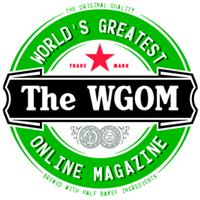Tomorrow is election day. Go vote if you have not voted already. Else, it's all your fault.
This month's selection is Timothy Egan's The Worst Hard Time, "The untold story of those who survived the Great American Dust Bowl."
Wow. What a depressing book. Chapter after chapter of personal stories of misery and deprivation and environmental disaster. This is social history at its most relentless. Egan's National Book Award-winning book is a must read for anyone interested in understanding his parents' (or, for you punk kids, grandparents') generation. Here's a little taste:
On May 9, 1934, a flock of whirlwinds started up in the northern prairie, in the Dakotas and eastern Montana, where people had fled the homesteads two decades earlier. The sun at midmorning turned orange and looked swollen. The sky seemed as if if were matted by a window screen. The next day, a mass of dust-filled clouds marched east, picking up strength as they found the jet stream winds, moving toward the population centers. By the time this black front hit Illinois and Ohio, the formations had merged into what looked to pilots like a solid block of airborne dirt. Planes had to fly fifteen thousand feet to get above it, and when they finally topped out at their ceiling, the pilots described the storm in apocalyptic terms. Carrying three tons of dust for every American alive, the formation moved over the Midwest. It covered Chicago at night, dumping an estimated six thousand tons, the dust slinking down walls as if every home and every office had sprung a leak. By morning, the dust fell like snow over Boston and Scranton, and then New York slipped under partial darkness. Now the storm was measured at 1,800 miles wide, a great rectangle of dust from the Great Plains to the Atlantic, weighing 350 million tons. In Manhattan, the streetlights came on at midday and cars used their headlights to drive.
....
New York was a dirty city in 1934.... On a typical day, the dust measured 227 particles per square millimeter -- not a good reading for someone with health problems. But on May 11, the dust measured 619 particles per square millimeter. ... A professor from New York University...calculated that on the seventeenth floor of the Flatiron Building on Fifth Avenue, the thickness of the dust was about forty tons per cubic mile, which meant all of New York City was under the weight of 1,320 tons. [pp. 150-152]
Thousands of residents of the Texas panhandle, Oklahoma, and Kansas developed "dust pneumonia". During dusters, drivers would drag chains from their cars in order to dissipate static electricity. On "Black Sunday," April 14, 1935, an even worse storm struck. "The storm carried twice as much dirt as was dug out of the earth to create the Panama Canal" (p. 8).
John Steinbeck wrote famously of the Joads and others who escaped the Dust Bowl. This book is the story of those who stayed behind. It is riveting, shocking, numbing reading.
So. Now that I've cheered you up, who wants to go watch some political commercials?
